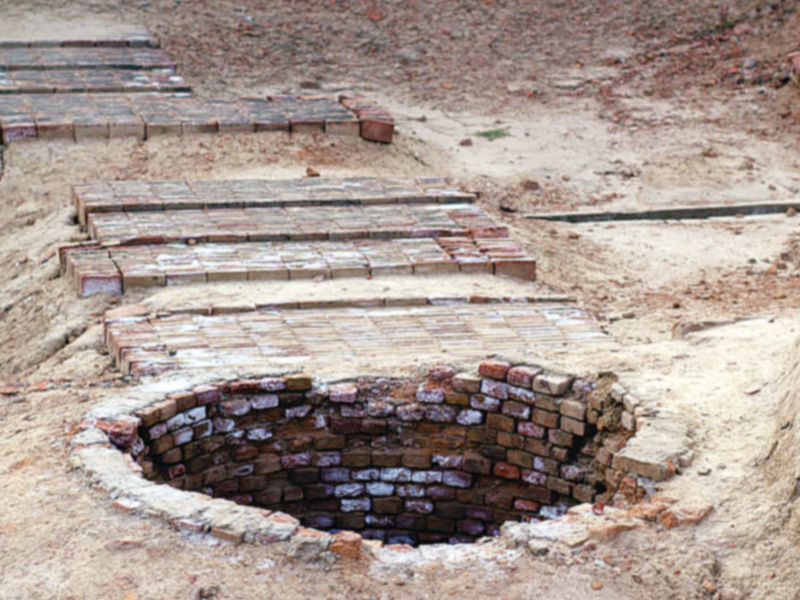
This is thought to be the bathing area with remains of housing walls in the background. Even 5,000 years later, these Bronze Age bricks have not eroded. In 1986, the first systematic, multi-disciplinary excavations were started by the Harappa Archaeological Project (HARP), under the direction of George F Dales and J Mark Kenoyer, according to the official website for Harappa. These excavations have continued almost every year since then.
This man has been a guard at Harappa for more than 20 years. The site has transformed since he first came there as a young man — now barbed wires have been put up to safeguard it from tourists who may destroy the archeological remains of this civilisation. He also works as a guide at the site.
An overview of the ruins of Harappa. Most of the structures have been damaged extensively. According to Unesco, the removal of thousands of bricks for railway ballast in the 1850s by the British — who were making a railway track nearby from Multan to Lahore — damaged this ancient city and most of its original shape has been lost.
The Harappa site was first briefly excavated by Sir Alexander Cunningham in 1872-73, two decades after bricks were stolen from the visible remains of the city. The first extensive excavations at Harappa were started by Rai Bahadur Daya Ram Sahni in 1920. His work was followed by Madho Sarup Vats, of the Archaeological Survery of India, and in 1946 Sir Mortimer Wheeler excavated walls and found the first pre-Indus Valley civilisation.
An overview of the well and drainage system. This area is thought to have been used for bathing and washing. Made somewhere around 2,600 BC, the sophistication of the drainage system reflects how advanced the Indus Civilisation was.
These giant ringstones are similar to ones found in Mohenjo-daro and Dholavira. Their origin is unknown but local legend says they belonged to a giant saint of the 17th century, Baba Nur Shah, who is buried within the premises of the Harappa ruins. But archaeologists believe that these giant ringstones of solid rock were used to secure wooden posts at gateways to the city.
A signboard put up by Harappa’s local management that gives directions to ancient cities (some belonging to the Indus Civilisation), emphasising how, even without speedy transport, there were similarities in the lifestyles of such distant areas. It highlights places like Mesopotamia too, which is considered to be the origin of the Bronze Age, a time frame when Indus Civilisation is believed to have existed too.
The tomb of Baba Nur Shah, who is believed to have lived in this area in the 17th century. Locals say Baba Nur Shah was a giant and, ironically, his 9-metre long tomb in Harappa attracts more visitors than the ancient ruins themselves. The tomb was properly constructed in 1918. According to the administration, the grave is unusually long on account of having the Sufi’s personal belongings buried with him.
Published in The Express Tribune, Sunday Magazine, September 4th, 2011.















1722323750-0/BeFunky-collage-(6)1722323750-0-270x192.webp)







COMMENTS
Comments are moderated and generally will be posted if they are on-topic and not abusive.
For more information, please see our Comments FAQ